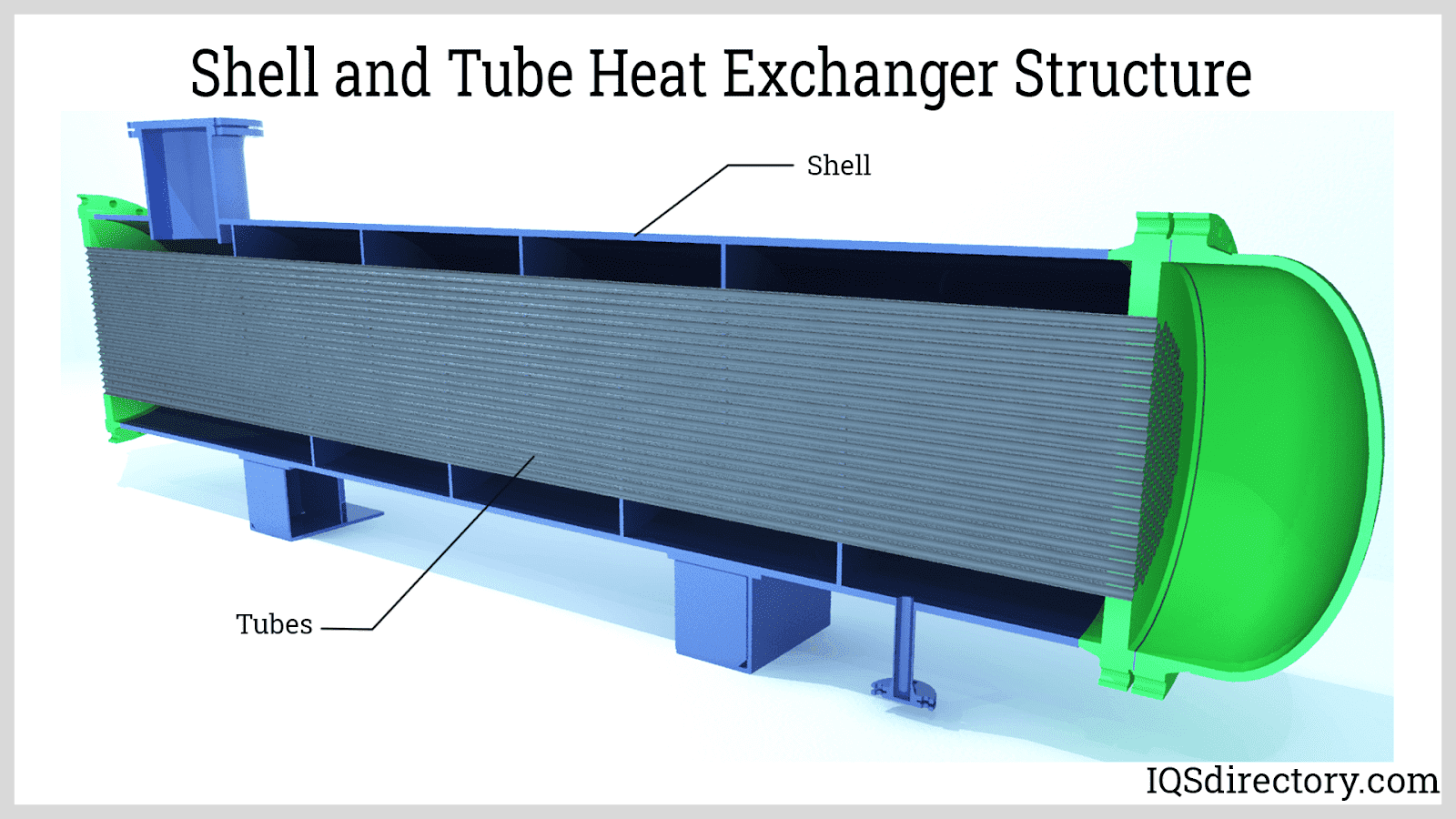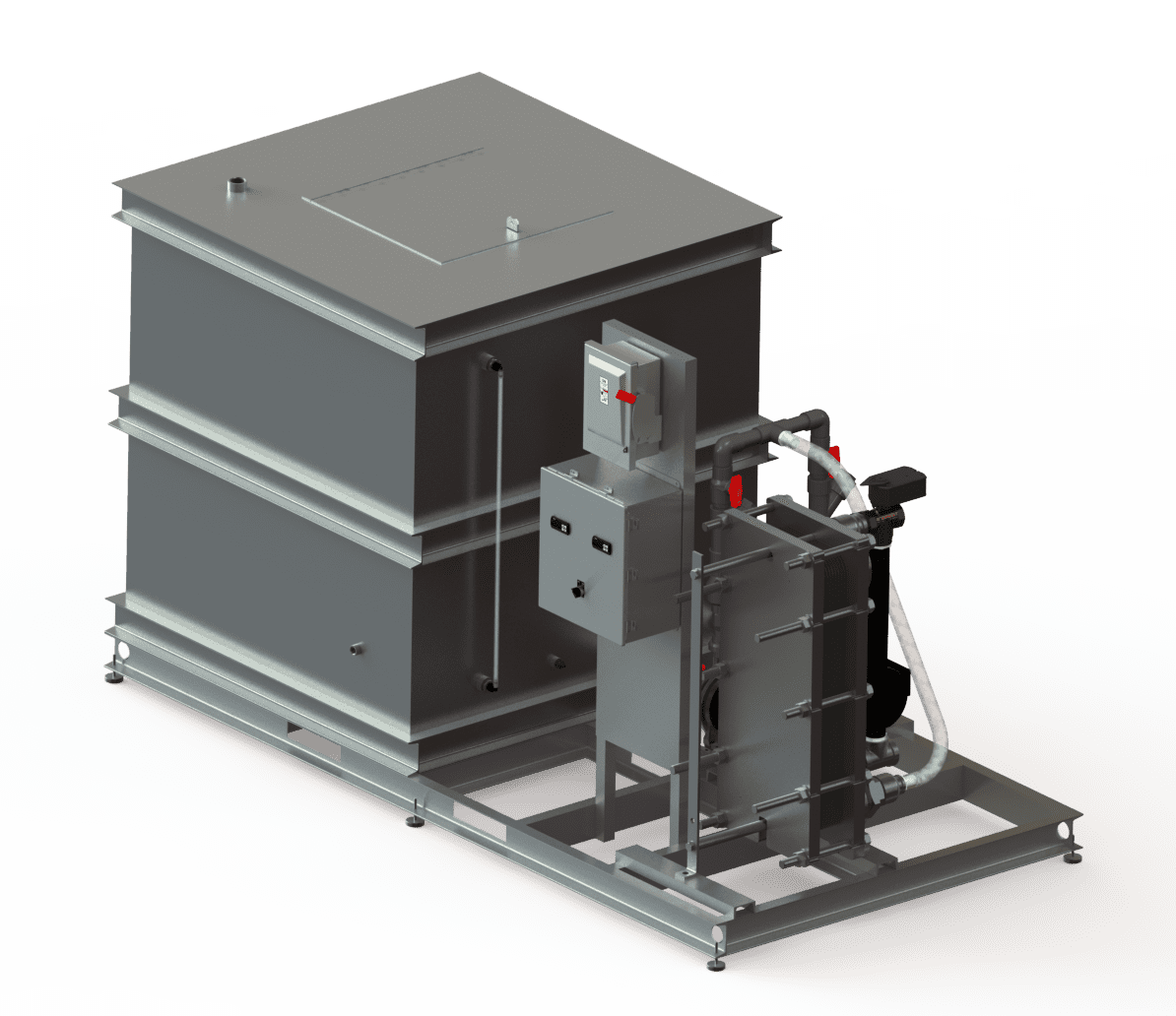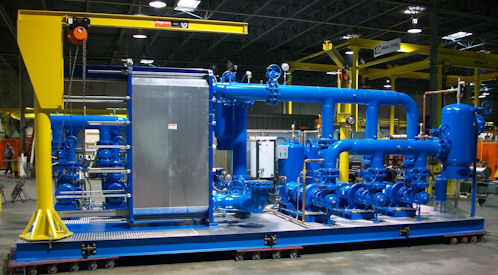Exploring Advanced CFD Modeling in DVS Heat Transfer Systems
Advancements in Heat Transfer Equipments: What You Need to Know for Optimum Performance
Developments in Heat transfer systems are transforming efficiency throughout numerous industries. Advanced materials like graphene and nanofluids assure considerable improvements in thermal conductivity. At the same time, the assimilation of IoT and device learning offers chances for real-time tracking and boosted power efficiency. The landscape of thermal administration is quickly advancing. Understanding these growths is crucial for attaining suitable system efficiency and sustainability in the future. What details developments are shaping this change?
Emerging Products for Improved Heat Transfer

Advanced Heat Exchanger Styles
While conventional Heat exchangers have offered their objective in numerous applications, advanced styles are now emerging to meet the raising demands for performance and performance. These innovative designs, such as plate, shell-and-tube, and finned-tube Heat exchangers, incorporate improved area and enhanced circulation patterns to boost thermal transfer rates. On top of that, small layouts permit reduced room needs without jeopardizing performance. Advanced materials, such as compounds and corrosion-resistant alloys, in addition enhance toughness and performance under severe conditions. Additionally, simulation technologies and computational fluid dynamics are progressively used to refine these styles, guaranteeing peak Heat transfer qualities. As sectors seek to reduce energy intake and make the most of result, the adoption of innovative Heat exchanger layouts is crucial in accomplishing these objectives.
The Duty of Nanotechnology in Heat Transfer
Nanotechnology plays a necessary duty in enhancing thermal conductivity within Heat transfer systems. By manipulating materials at the nanoscale, scientists have actually achieved substantial improvements in power performance. These improvements not only enhance performance however likewise contribute to more lasting power services.
Enhanced Thermal Conductivity
Considerable developments in thermal conductivity have emerged via the application of nanotechnology, transforming Heat transfer systems across different industries. By incorporating nanoparticles into Heat transfer liquids and materials, researchers have actually accomplished amazing rises in thermal conductivity. These nanoparticles, such as carbon nanotubes, graphene, and steel oxides, enhance the Heat transfer residential or commercial properties due to their high area and one-of-a-kind thermal characteristics. The resulting compounds exhibit improved performance in applications ranging from electronics cooling down systems to sustainable power modern technologies. The ability to customize the dimension, form, and composition of nanoparticles allows for maximized thermal monitoring remedies. Consequently, nanotechnology continues to play a crucial duty in the growth of extra efficient and effective Heat transfer systems, leading the way for boosted commercial applications.
Power Effectiveness Improvements

Integration of IoT in Heat Transfer Systems
The integration of IoT in Heat transfer systems presents the application of wise sensors that improve operational performance. These sensing units enable real-time information monitoring, permitting for prompt modifications and optimizations. This technological basics advancement has the possible to substantially improve efficiency and power monitoring in Heat transfer applications.
Smart Sensors Implementation
As Heat transfer systems advance, the integration of clever sensors via the Web of Points (IoT) has actually become a transformative method. These sensing units enable real-time monitoring of temperature, pressure, and flow rates, boosting system performance and dependability. By gathering and sending data, they facilitate aggressive upkeep, minimizing my blog the risk of system failings. In addition, smart sensors add to power savings by refining operational parameters based on ecological problems. Their ability to assess abnormalities and patterns allows for educated decision-making, guaranteeing peak performance of Heat transfer systems. As industries progressively adopt this technology, the execution of clever sensors stands to revolutionize just how Heat transfer systems are taken care of, paving the way for higher sustainability and enhanced efficiency outcomes.
Real-Time Information Monitoring
Just how can real-time data keeping track of enhance the effectiveness of Heat transfer systems? By integrating Net of Things (IoT) modern technology, Heat transfer systems can utilize continual information collection from wise sensors. This real-time monitoring enables for immediate evaluation of flow, stress, and temperature prices, enabling drivers to determine ineffectiveness promptly. Changes can be made to enhance efficiency, lower energy usage, and extend tools life-span. In addition, predictive upkeep can be implemented, lessening unforeseen downtime and pricey repairs. The capacity to envision efficiency metrics via dashboards improves decision-making, fostering an aggressive method to system management. Inevitably, real-time information checking not only boosts functional efficiency however also adds to sustainability objectives within commercial processes.
Energy Performance and Sustainability Trends
Power effectiveness and sustainability fads are improving the landscape of Heat transfer systems, driving advancement and conformity throughout numerous sectors. Organizations are progressively focusing on energy-efficient designs to minimize functional expenses and lessen environmental effects. The combination of renewable resource resources is becoming a lot more prevalent, allowing Heat transfer systems to run sustainably while fulfilling governing demands. In addition, innovations in products and technologies advertise lower power usage and enhance total efficiency. Lifecycle assessments are also getting grip, allowing firms to assess the environmental influence of Heat transfer systems from production to disposal. This concentrate on sustainability not just sustains business duty yet additionally positions organizations competitively in a market where consumers increasingly favor environmentally friendly services. Consequently, energy performance and sustainability continue to be critical factors to consider for future developments in Heat transfer modern technology.
Developments in Thermal Management Solutions
While the need for reliable Heat transfer proceeds to climb, innovations in thermal monitoring options are emerging to address both performance and sustainability challenges. Advanced products, such as phase change materials and nanofluids, are being developed to boost Heat transfer effectiveness - DVS Heat Transfer Systems. These materials enhance thermal conductivity and permit for better temperature regulation in different applications. Furthermore, innovations like energetic thermal control systems are getting traction, making it possible for real-time modifications to handle Heat circulation properly. These systems contribute to energy savings and minimize the environmental effect of thermal procedures. Moreover, the assimilation of IoT in thermal management helps with tracking and anticipating maintenance, ensuring optimized efficiency and durability of Heat transfer systems. Overall, here these advancements represent substantial strides toward more lasting thermal monitoring practices
Future Directions in Heat Transfer Modern Technology
Emerging developments in thermal management solutions signal an appealing future for Heat transfer modern technology. Scientists are progressively focusing on creating materials with remarkable thermal conductivity and enhanced power effectiveness. Advancements such as nanofluids, which contain suspended nanoparticles, supply substantial enhancements in Heat transfer performance. Additionally, the integration of wise products that adjust to varying temperature level problems is getting grip, enabling for even more receptive and effective systems. The surge of additive manufacturing strategies is likewise enabling the layout of complex Heat exchanger geometries that optimize liquid flow. The execution of maker knowing formulas is prepared for to change the optimization of Heat transfer systems, assisting in anticipating upkeep and efficiency improvement. Jointly, these developments are poised to change the landscape of Heat transfer innovations in numerous sectors.

Regularly Asked Questions

Exactly how Do I Select the Right Heat Transfer System for My Application?
Choosing the ideal Heat transfer system entails examining application needs, including temperature varieties, fluid residential properties, and effectiveness demands. Analyzing system types, upkeep factors to consider, and cost-effectiveness likewise plays a vital role in making a notified choice.
What Are the Maintenance Demands for Advanced Heat Exchangers?
Maintenance demands for innovative Heat exchangers usually include regular examinations, keeping track of for leakages, cleansing of surface areas, and ensuring suitable flow rates. Sticking to maker guidelines guarantees effective operation and prolongs the devices's life expectancy.
How Do Environmental Factors Impact Heat Transfer Effectiveness?
Ecological elements substantially influence Heat transfer performance. Variations in air movement, temperature, and humidity impact thermal conductivity and convective Heat transfer, inevitably influencing system performance and demanding factor to consider throughout the style and procedure of Heat transfer systems.
What Security Criteria Apply to Heat Transfer Systems?
Safety and security requirements for Heat transfer systems typically consist of standards from organizations such as ASME and ASTM. DVS Heat Transfer Systems. These requirements address materials, style, and operational techniques to ensure dependability, performance, and defense against threats in numerous applications
Just How Can I Repair Typical Heat Transfer System Issues?
Fixing common Heat transfer system concerns involves examining for leakages, ensuring proper liquid flow, inspecting insulation honesty, and verifying temperature level differentials. Determining these factors can assist preserve system performance and avoid additional complications.
Nanotechnology plays an important duty in enhancing thermal conductivity within Heat transfer systems. Considerable advancements in thermal conductivity have actually emerged through the application of nanotechnology, changing Heat transfer systems across numerous markets. Developments in thermal conductivity via nanotechnology have actually paved the way for exceptional renovations in power performance within Heat transfer systems. Energy performance and sustainability fads are reshaping the landscape of Heat transfer systems, driving development and compliance across various markets. The combination of IoT in thermal management assists in monitoring and anticipating maintenance, making certain maximized efficiency and durability of Heat transfer systems.